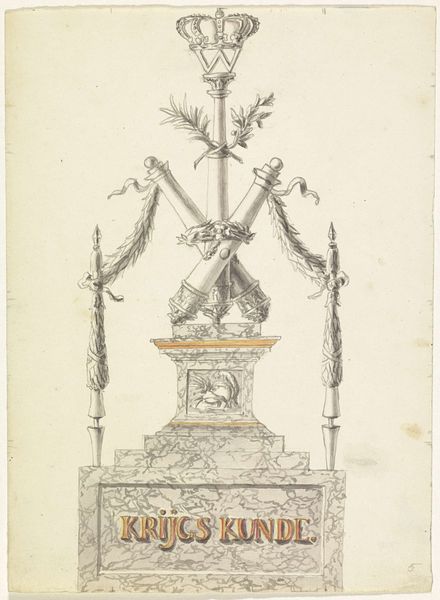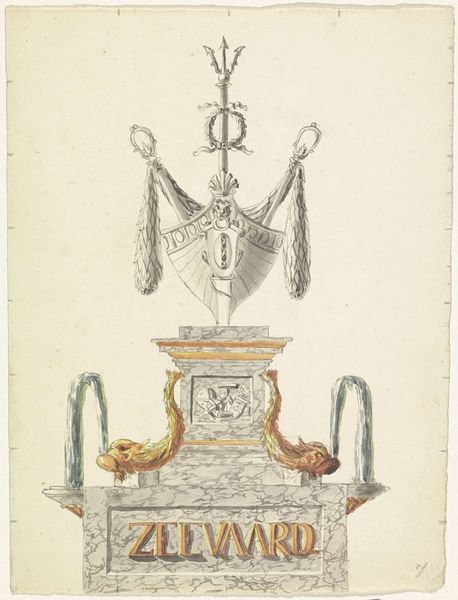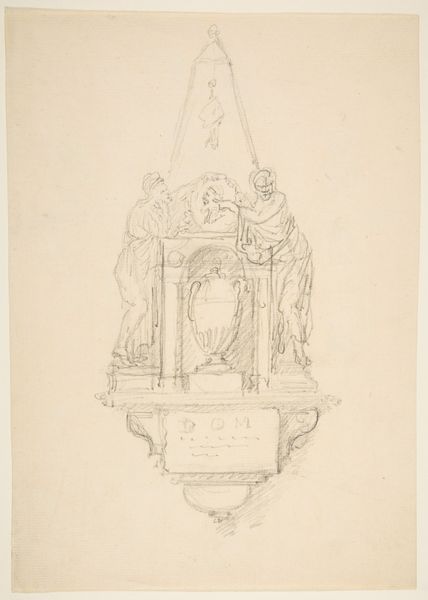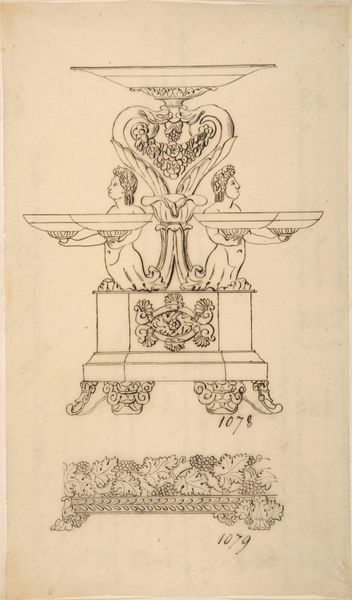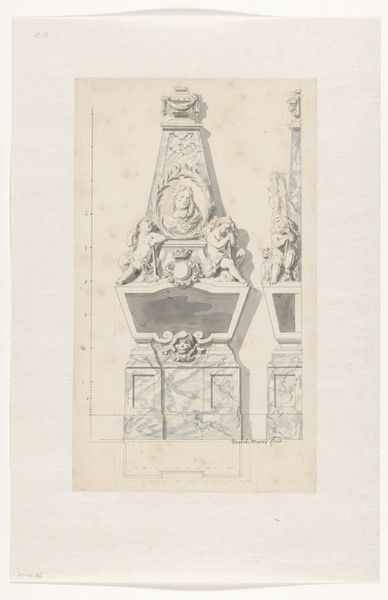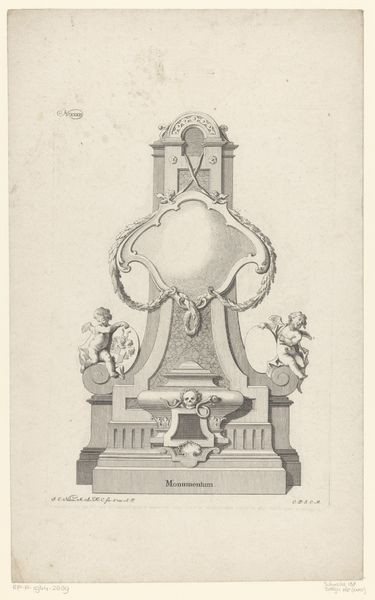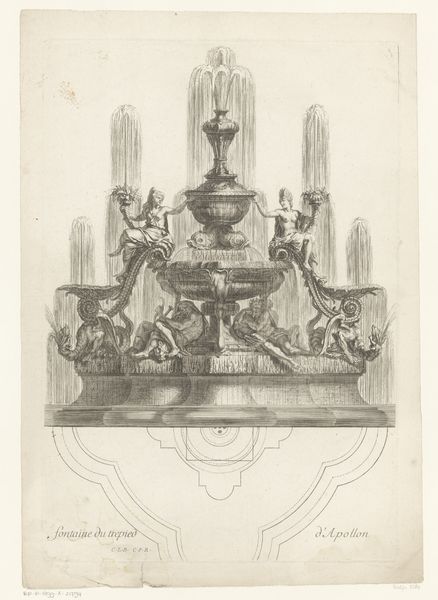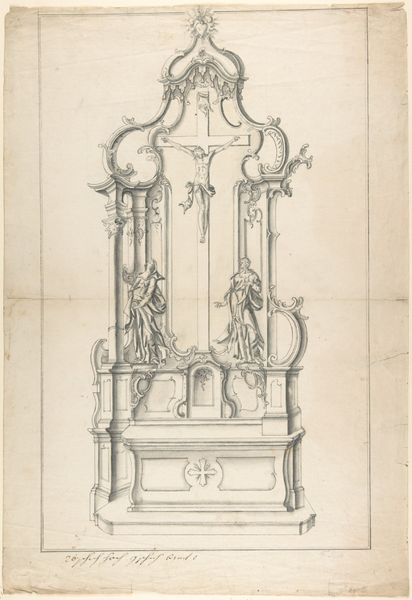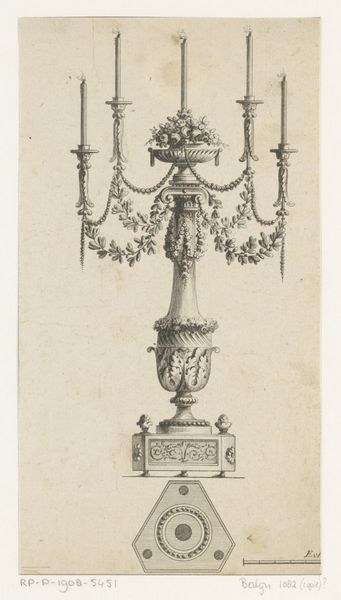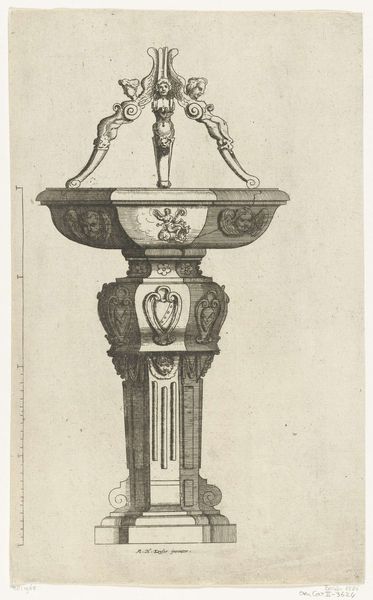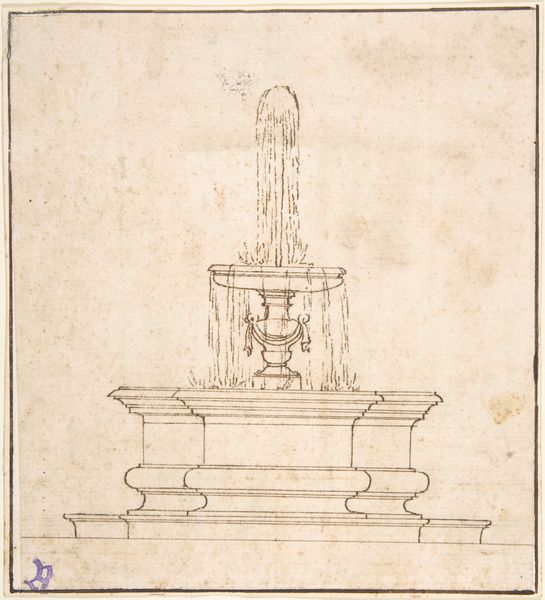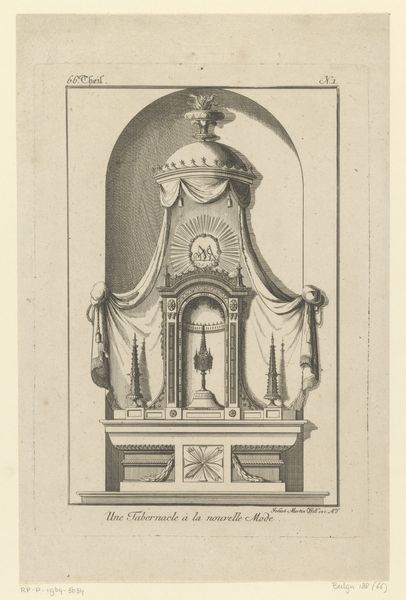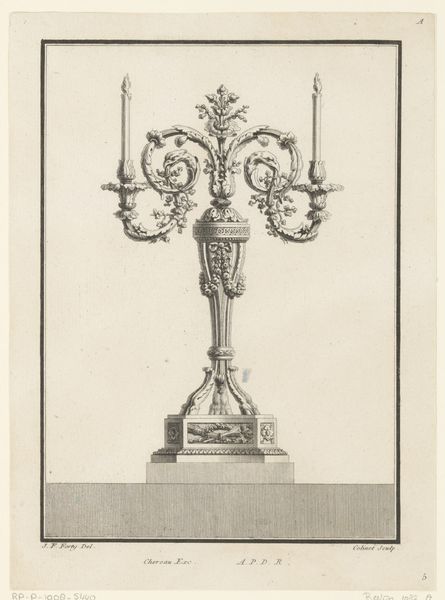
drawing, paper, pencil
#
drawing
#
neoclacissism
#
allegory
#
paper
#
pencil
#
watercolor
Dimensions: height 223 mm, width 165 mm
Copyright: Rijks Museum: Open Domain
This sketch of a decoration on the Keizersgracht near Weesperstraat was rendered anonymously in 1816 using pencil, pen and watercolor. The work depicts an elaborate monument dedicated to agriculture, with crossed scythes and a sheaf of wheat. The architecture is adorned with marbled paper, which imitates the appearance of stone, yet is cheap and mass-producible. The decoration includes an elegant, triumphant rooster, a popular symbol of vigilance and resilience, and a testament to the enduring importance of agriculture in Dutch society. The drawing acts as a temporary structure, and its materials contrast the traditional artistic mediums with everyday life. The artist engages with symbols of labor, politics, and consumption by using accessible materials to create the image. While the structure's dedication to LANDBOUW, or agriculture, speaks of its cultural significance in the early 19th century. The material, making, and context are important when trying to understand the full meaning of this artwork, because it challenges the traditional boundaries between fine art and craft.
Comments
No comments
Be the first to comment and join the conversation on the ultimate creative platform.
